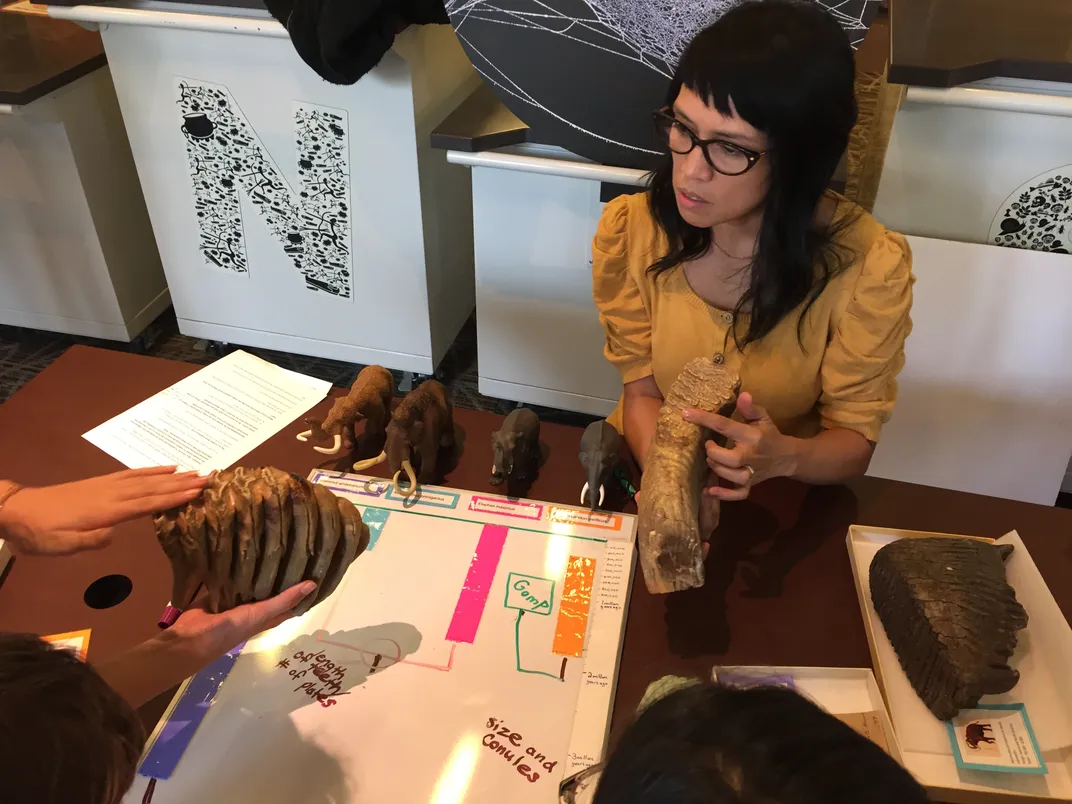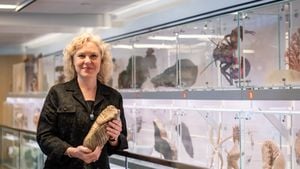NATIONAL MUSEUM OF NATURAL HISTORY
Try These Hands-on Activities in the Smithsonian’s New Fossil Hall
Hands-on activities at the Smithsonian teach visitors about the history of life on Earth and what it means to us today.
/https://tf-cmsv2-smithsonianmag-media.s3.amazonaws.com/blogging/featured/IMG_5851.JPG)
Awe, wonder, curiosity and surprise. When I walk through the National Museum of Natural History’s exhibitions, these are the reactions I see in the visitors. It gives me hope because my job is to design and develop activities where almost anyone visiting the Museum can learn something new about the natural world. So I use that enthusiasm to ignite a fun, engaging learning opportunity.
Unlike school where learning is required and measured through grades, learning in Museums is by choice. Museum visitors choose whether or not they learn and, frankly, nobody ever ‘fails’ Museum. But that doesn’t mean that success is guaranteed either.
For the new “David H. Koch Hall of Fossils—Deep Time,” there is a team of experts at the Museum dedicated to creating engaging hands-on activities that use fossils to teach visitors about the history of life on Earth and what it means to us today. We are a group of learning experts, scientists, graphics designers and 3-D technicians who have spent almost a year creating a dozen activities that bring to life the science in the new exhibition which opens June 8. There is another member of our team, who is not at any of our meetings or workshops, but is always present in our minds—you, our audience. Or I should say our audiences, because the Museum has many audiences each with different perspectives, interests and motivations. We design activities with as many of you in mind as possible.
The history of life on Earth—3.7 billion years—lent itself to many activity ideas. We started by identifying important science concepts and cool specimens to feature and thinking about visitors’ interests. We quickly drafted a few activity ideas, gathered some objects and then went out into the exhibits. We asked visitors what they thought of the ideas, what is surprising or interesting and if they had any questions. Sometimes their feedback helped us toss some ideas into the bin. Other times, it helped us craft the activity and select objects to build a rough prototype.
Rough prototypes are just that—rough: think portable white boards and markers, taped up images, and hand-drawn charts. We took the prototypes into Q?rius, our science education center, and asked visitors to help us figure out what works and what doesn’t. They’re almost always game to give it a try. Visitors give us their honest input and we use it to hone the activity. Sometimes, we tweak the science concept or educational goal. Other times, we switch out objects or change the flow of the activity. With a simple prototype we can iterate the experience as often as we need in order to get it right.

Central to the experience are the fossils. Putting fossils at the heart of the hands-on experience has its benefits and its challenges. Fossils are interesting to just about everybody. Who doesn’t want to hold a fossil? But they can also be very rare. Sometimes the fossils we want to use in an activity are too precious to bring out for visitors to handle. This is where we put technology to use. For some of the activities that will be in “Deep Time,” we 3-D scanned and printed fossils from the Museum’s collection. Rare fossil trackways? No problem, if we can 3-D scan them. Large whale skulls? No problem if we can 3-D scan them and then scale them down to a printable size. Microscopic pollen or fern spores? You probably didn’t know this, but yes those can be scanned and printed, too. The possibilities are almost endless.
If you visit the new fossil hall over the next year, you will be able to learn about elephant, bird and whale evolution through hands-on activities. You’ll explore how scientists date fossils, recreate ancient ecosystems and find out how scientists use trace fossils to learn about ancient creatures revealed through their fossilized behavior.
When we started this journey almost a year ago, it was a daunting task. But recently, as we tested our final prototypes, I was filled with hope. I could see the awe, wonder, curiosity and surprise as visitors discovered how diverse elephants used to be, recreated their ancient ecosystem from fossil pollen and moved tiny robots around in sand to simulate fossil trackways. It will never get old figuring out how to give the visitors the best science class they have ever had and all the while knowing they can’t fail.
Related stories:
Old Fossils, New Meanings: Smithsonian Exhibit Explores the History of Life and What it Means for Our Future
Here's How Scientists Reconstruct Earth's Past Climates
Q&A: Smithsonian Dinosaur Expert Helps T. rex Strike a New Pose
A Smithsonian Dino-Celebrity Finally Tells All
An Elegy for Hatcher the Triceratops



